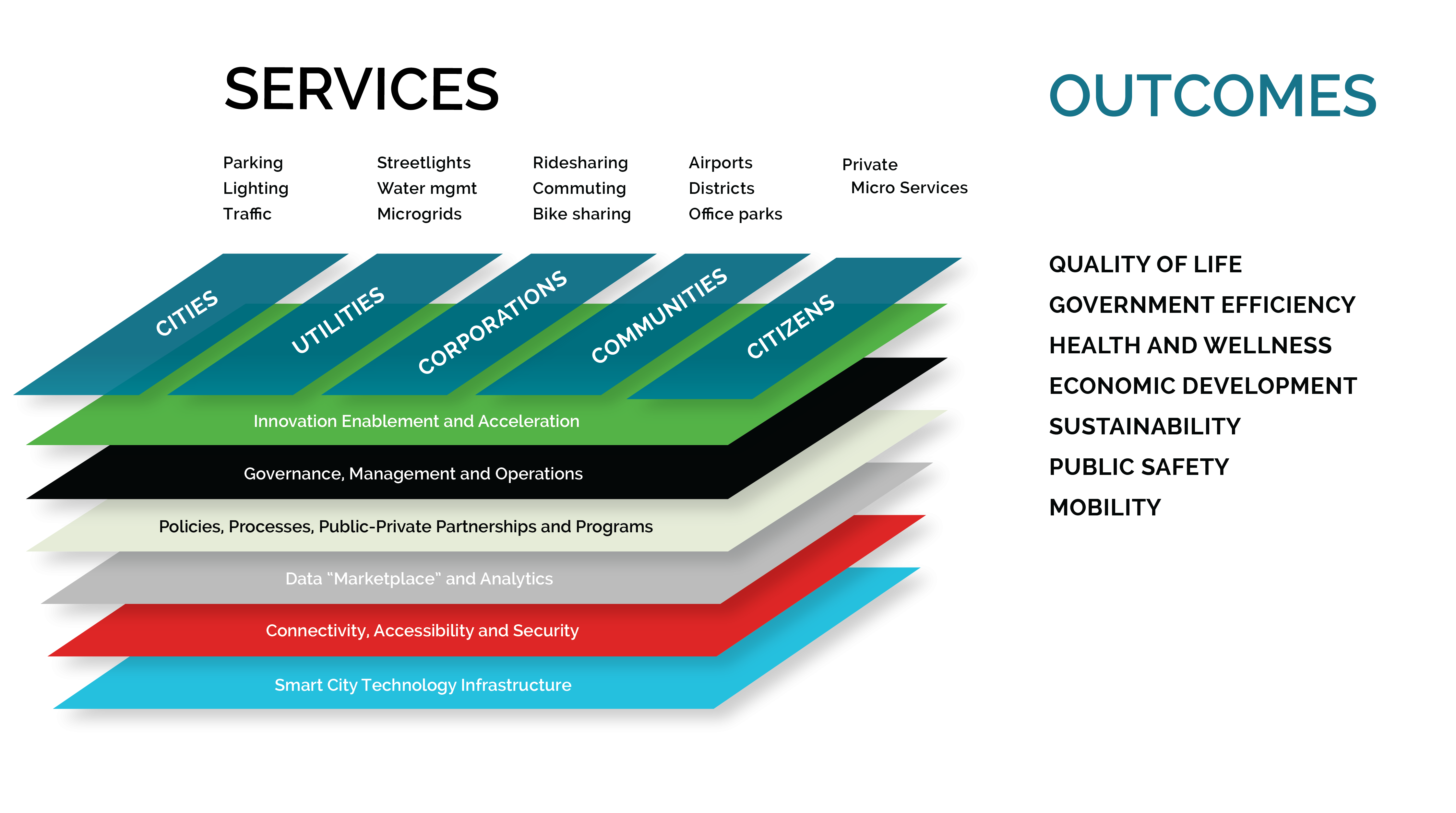technology (17)
Shared massage chairs are not a rare thing anymore. We often see them when we go shopping. Do you know why it can start working immediately after scanning the QR code for payment? What principle is this based on? Let'sl take a look at the "story behind" the shared massage chair.
In addition to the basic massage function, the shared massage chair also integrates a wireless module for data transmission and control. On this large-scale shared device, due to the number of access and real-time reasons, 4G and GPRS are generally used. But let's also take a look at using NB-IoT modules and look into which of these is more suitable for use on shared massagers.
COST
Shared products need to be promoted and distributed in large quantities to cultivate users' usage and consumption habits. Therefore, it is necessary to choose a communication solution with relatively cheap tariffs, chips, and modules.
Among 4G, GPRS, and NB-IoT modules, 4G has the highest cost, but it has a high transmission rate and a large infrastructure coverage. Relatively speaking, the Cat1 module is relatively cost-effective. Secondly, the price of GPRS is moderate, but GPRS faces the risk of withdrawing from the network; the last is The NB-IoT module has the lowest cost, but the transmission rate is small, but it is enough to be used on a shared massage chair.
REMOTE MANAGEMENT
Remote monitoring and sharing of product data, visual presentation of product energy consumption, location, battery, operating data, etc. This is why wireless radio frequency modules such as LoRa, ZigBee, and Sub-G are not applicable, and NB-IoT modules are relatively more suitable.
COVERAGE
Cellular data conforms to the usage habits of users and has a wide coverage area. It can be covered as long as there is an operator's network. At the same time, it can provide products with a standby time of more than several years. By the end of 2020, NB has covered major cities and towns. Covered, you can also apply for coverage if necessary.
Through analysis, we found that the NB-IoT module is really more suitable for shared massage chairs!
Ebyte's NB-IoT modules are mainly represented by the EA01 series, especially the EA01-SG, which integrates a high-precision, high-performance positioning chip, which is more convenient for sharing devices. Let's take a look at the application of EA01-SG in shared massage chairs.
A network of physical objects interconnected through computing devices like machine appliances, digital devices, objects, vehicles and uses APIs (Application Programming Interfaces) and sensors to exchange data and connect with the internet is known as IoT or Internet of Things.
IoT platform connects the virtual and the real worlds. It helps the companies in managing IoT devices, connectivity, security, linking devices to back end system, collecting device data, building & running IoT apps as well as ensuring IoT interoperability.
According to a survey, approx. 75 billion devices will be IoT enabled by the end of the year 2025.
Also, in the coming 5-6 years, the world will witness an investment of near $ 6 trillion on IoT out of which at least $ 3 trillion is expected to be invested in the health care industry for IoT.
And why not? The experts are also of the same viewpoint that by the end of the year 2020, approx. 90 % of the health care industry will adopt IoT. Generally speaking, IoT has already made its way to the homes of general people through Google, Amazon, Alexa, etc.
Almost all the IoT enabled devices to have:
- A device or a sensor;
- Data processing unit;
- A connecting unit;
- User interface.
Challenges Faced By The Health Care Industry
The health care industry faces constant challenges. No compromise is entertained when it comes to health.
The number of deaths occurred due to delay in treatment or delay in the ambulance approaches, in the prevalence of road jam are recurring and very common.
However, these untimely deaths can be prevented by enabling IoT in house treatment in the health care industry.
The devices that are capable of monitoring heart rate sleep cycle, energy expenditure can be helpful in the timely detection of the problems arising in the human body.
In other cases, the risk of infection post-surgery is a real threat to the life of the patient, and the result can be anything from a prolonged hospitalization to even death.
The other problems faced by the health care industry are health monitoring, timely detection of health problems, tiresome diagnostic techniques, inappropriate ambiance, inaccurate measurements, human error, etc.
Although health care is relatively slow as compared to financial or other industries in the incorporation of IoT devices, 40 % of health care is already using IoT.
The slow growth is due to the following reason:
- The methods of health care go through rigorous tests.
- Security in health care is still a significant concern for the devices that are enabled with IoT.
Even the hurdle remains, yet the speed and connected health care are growing each day progressively.
Health care service providers need to innovate and plan for digital transformation and reach in those areas where there are not enough health care systems and professionals.
The industry needs a reliable communication network partner to provide mobile and cloud connectivity. IoT App Development Company should take care of this issue.
Now the question arises as to how IoT Is Transforming the Health care Industry? Following are attributes and contribution in the health care industry:
In the coming years, IoT devices such as Coagulation testing and Activity trackers will adopt the world of connected things with a common platform from handheld devices to medical equipment as well as health records. The capability of IoT is inexhaustible for these devices.
The potential to efficiently manage the health of the patient as well as monitor and track the problems is saving valuable seconds of the life of a patient, without having to visit the hospital.
With the help of IoT, the health experts can give a distant and remote diagnosis to the patient. Also, they can track medical assets that provide quality care instantly and manages health care efficiently.
With the help of Wi-Fi and sensors, the ability to locate the correct section in a hospital has become easy for patients as well as health experts.
Almost all the health experts who have already adopted the IoT enabled services do believe in the crucial benefits of it.
They think that the benefits will be to control and monitor sensors and medical devices from a patient’s heart monitor to his or her temperature gauges; the real-time data exist in health care.
Further, patients and staff can securely manage IoT data by creating an effective as well as a safer environment through a standard application on mobile devices.
Perpetual Collaboration
Continuous collaboration amongst health experts and patients is imperative for health care organizations. By providing access to non-core data and applications to them whenever they need, will boost up the productivity level and will help in enhancing efficiency.
When it comes to diagnostic accuracy, WCE short for Wireless Capsule Endoscopy comes into the picture.
The process involves the patient to swallow a small capsule camera that can record the patient’s internal organs.
It has the potential to capture specific parts of the gastrointestinal tract that are not visible otherwise through diagnostic procedures.
Also, it can detect bleeding in the gastrointestinal tract, which is not possible through traditional methods.
Maintenance of Cordial and Healthy Relationships
The health experts have to take special care to manage the risk by protecting the record of patients and other crucial data against external exploitations.
This refers to ensuring the service continuity and no disruption in the event of a breach of trust. Many experts are saying that you can combine IoT with Android & iOS apps as well.
It will help you to reach out to more and more people and also make use of this wonderful trending technology.
A Flourishing Transformation
Hence, IoT is indeed a boon not only for health care but almost every industry that is capable of enabling its services through IoT.
Its current pace of growth in health care is hopefully best for this domain. IoT health care means an efficient and more accessible patient care experience.
It allows staff to do their work in a better way, and this is the reason why 80 % of health care experts forecast that IoT is going to transform the industry in a better way.
With global network connectivity and infrastructure, it is high time for other health care providers to adapt and offer IoT enabled services to the patients nationally as well as internationally.
Artificial Intelligence is a popular term currently evolving around software industries. Many app development companies were developing their requirement process to recommend AI-bases workers and also many institutes were trained to learn the concept of AI. It clearly says that in the future, most of the tasks will drive through AI. Hence it is good to know how AI will help the professions to run their routine work effectively. It’s not only about learning the skill but also depends upon the interest you have to learn. AI does not only deals with a particular requirement.
It also deals with sectors like data analytics, machine learning, data mining, etc. By combining these factors will help to maintain the AI to train the job for the long term. Hence make sure to know the areas that follow to build the profession in profit. This blog will help you to know the information for the profession that helps to operate effectively.
Software Development
Software development is one of the topmost demanding jobs in every country. By getting into the job as a software developer will help to promote the career faster than the other industries. In the future, AI will help the programmers to think less as machine learning will take place to eliminate the code and introduce the algorithm to build the application. By allowing the Ai to adopt the section to work will help to play the complete function in an easy mode. IT reduces the effort of using the coding and also helps to build the apps easier and effectively. For example, software testing is one of the important roles in development, by placing AI to automate the testing will help to replace the employee and reduce the effort of them.
Machine Industry
The machine industry is a vital part to run society. Workers were working for the long term and creating a great effort to complete the work. AI will help to respond to the function to operate smarter and effectively. By utilizing the data analytics, the result to maintain the chain process will become easier and more effective. Hence complete machine industry will get a hike to improve their quality. By focusing on furthermore internets of things get communicated with the sources from industry and get huge control. Hence by using these technologies will bury the effort of workers and also increase the quality of time from the manufacturing side. It improves the quality and helps to maintain the product to get qualified.
Education System
Education is the right of every citizen of the country but most of the time students get frustrated due to the load that is given by the system. Hence it collapses the mind easily. Thus to prevent it Ai can implement it. It helps the system to decrease the load of education and improves understanding. It allows the student to get interact easier and helps to improve the concept to understand.
For example, if a student wants to learn the practical session, its easy to make it live virtually. It helps them to improve their creativity and also increase their interest to observe. Hence by implementing AI will tend to improve the whole concept of education.
Healthcare
The healthcare industry is always an important part to get noticed. Every person was looking for improving their health but most of the time they were lazy to build the habit to take care. Thus by using Ai, the cost of spending bucks for health will reduce and the improvement of the human cycle will get increases. Already Ai apps were built to support the human by analyzing their symptom. Hence in the future, apps get increased and also the technology will get improved. By acknowledging the human about their problem with the symptom will help to improve their health without any support and also help to save their money. Even data analytics will help the patient’s improvement of humans in terms of analyzing the error. Thus by using data science as it is a part of Ai will help to maintain the record of patient safer and also reliable to the human.
Supply Chain
The supply chain is one of the toughest parts of the profession as it requires used by many companies to service for them. By using the data analyst, the usage level of getting information will be much good rather than depending on humans. It helps the business person to prevent the time shortage and also increases the quality of response. By ensuring the time is important to supply chain business as it matters a lot to the supply chain profession. Hence applying Ai to the supply chain will be prettier and help the process to work properly and reliability for the system.
Wearable Gadgets
Technology is much reliable to society to help the human and increase the concentration on their work. Wearable devices are one of the popular devices that have been getting merge with human routines. Especially devices are used for health reasons. Hence by using the gadgets will allow the user to acknowledge the ratings of health. By using the gadgets, the usage will be finer to track. Also, the apps related to wearable devices were much high and also demand is also getting a hike. Many top app companies were working for wearable apps. Hence the usage of these kind apps will bring great attention to the software industry. It is related to IOT. Thus automatically Ai will get into the game to manage the data.
Business Models
Maintaining the business as per the requirement of the client is the major responsibility of every person. The important part is the data that has to be analyzed well. It should not get criticized. Hence analyzing the data with the help of AI models will improve the business requirement and also the client requirement. Thus in the future, many companies will seek data analytics to improve their business.
Final Words
Artificial intelligence is one of the topmost sectors in today’s world. And driving the field via these techniques will help to improve the complete session.
The smart technology of IoT or Internet of Things is really changing the technological landscape from all aspects. It is a network of connected devices that work through exchanging data between each other through a cloud network.
IoT technology has had a deep impact on the world of technology and web development is one of them. You might ask how these two things are connected, well, as it turns out, IoT devices need to work with web development because it needs both a front-end and back-end development, and that is where web development comes in. in the past few years, IoT has changed the web development in a lot of ways. Here are a few examples of that.
- Continuous Website Optimization
Internet of Things is a constantly evolving sector and there is no possibility of this stopping soon. And that is why the web developers have to constantly keep on optimizing their websites to match the evolving nature of the website. This is the only true way to stay relevant in the industry of IoT.
- Raising The Bar On The Expertise
IoT has definitely increased the bar on the expertise when it comes to the knowledge of coding and framework. IoT developers need better knowledge of web development languages and database management.
This need for advanced knowledge has definitely raised the bar for the developers to enter the game. They can’t just start with web development with just JavaScript knowledge anymore. They need serious knowledge of coding today. That’s hiring a reliable web development company in NYC is a necessity.
- Speed Of Data Transaction
The traditional data process is through request analysis by web servers. But this process is not useful when it comes to IoT. for IoT devices, the data transaction speed is much higher and that is why the traditional process is replaced by the cloud data transmission process. This way the devices work faster by transmitting data faster.
- Need For An Increase In Security
IoT devices are more prone to get hacked and manipulated by hackers. And that is why web developers have to up their security game. A normal security protocol for web development is not enough for IoT devices. They need stricter security design pattern for the connected device's network to keep it safe for the users. You can follow the best practices for mobile app security here as well.
- Power Management Needs
On an IoT network, the programs that run in the background drain a lot of power. This results in decreased communications and work. And that is why web developers have to design the layout in such a way that it will minimize the amount of power being used. Before you go forward with the web development plan for IoT device network, you have to design a power management plan.
- Dynamic UI
The normal UI design process by web developers has changed a lot due to the IoT industry. And that is why the developers have to rethink their UI development approach. Following the best practices to develop IoT based designs is the right way to go for web developers today.
The impact of IoT is all-encompassing and even web development is not out of its impact. The developers have to change the normal practices they used to follow to match pace with the constantly evolving process of Internet of Things. Above mentioned are only a few ways IoT is effecting web development. The impact is even deeper than you think and it is going to get even deeper with time.
There is no overstatement in the saying that that Internet of Things (IoT) is reshaping business processes and workplaces in a never-before way. Connected devices are increasingly pushing the boundary of innovation for the enterprises and industries of all niches. Thanks to these connected devices and a huge upsurge of IOT mobile app development, consumers are being benefited most through frictionless user experience.
No wonder in the fact that the IoT software development is exploding with all possibilities and promises. Just like ever before, the market is brimming with a whole array of scalable, feature-rich, secure and user-optimized connected solutions that are transforming the way we interact with devices and use software solutions at the workplace.
In spite of such huge promise and possibilities, IOT software and app development faces some hefty and crucial challenges that developers of the present-day need to be aware of. Here we are going to explain some of these challenges in brief.
- Operating System (OS) Considerations
The first technical challenge and pulling factor that IOT app development companies need to deal with is the consideration of the operating system of the devices. Since IOT devices have mostly shorter memory capacity and a single track operational capacity, developers need to approach the development challenges for such devices in a different way than with the desktop solutions. The developers need to pick an OS that perfectly fits the device capability and the objective of the application.
As of now, most of the IOT developers surveyed for their OS preferences have clearly chosen Linux. Linux according to most IOT developers, offers the perfect OS for IOT devices with a lot of memory constraints, microcontrollers, and IOT gateways.
- Selecting the Gateways
The gateways in the IOT landscape plays the most critical role by connecting almost all the constituent elements ranging from connectivity protocols like Wi-Fi or Bluetooth, ports, IOT sensors, cloud systems, etc. Naturally, for the whole IOT ecosystem gateways really play the mission-critical role.
When it comes to the choice of appropriate gateways for your IOT application, you have several well-known choices from renowned technology companies like Dell, Nexcom, Intel, etc. These gateway providers as if now are proved to be highly effective for end number of applications. Some of the key aspects that you need to consider in gateways include the particular specifications for the network, supporting development environment, power rating, memory capacity, etc.
- Security & Privacy
One of the key aspects that IOT app developers should give utmost priority is the app security and privacy. The security here not just refers to the network security but practically security of every different component. As IOT devices penetrate the personal spaces of the users, they are often vulnerable to misuse and breaching of data security through cyber-attacks.
Maintaining optimum data security and safeguarding privacy are two aspects that always remained to be the contentious areas for the IOT app developers worldwide. Let us have a closer look at various security aspects of an IOT app.
- Data Exchange Security: The data generated through an IOT app through the IoT sensors and devices pass through the gateway and is finally stored at the cloud server. To ensure optimum security to this data it is important to use encryption for safeguarding the data.
- Physical Security: The IoT devices unlike other computing devices are normally used in private and remain unattended most of the times. This is why they remain vulnerable to a lot of security threats from hackers at the device level.
- Cloud Storage Security: A cloud storage solution normally remains secure from threats and intrusions. Even then, the developers of the IOT apps need to make sure that the data in cloud storage remain safe and secure.
- Privacy Updates: To protect the privacy of the user data processed and fetched by IoT devices, there need to be certain compliance rules. For instance, all fitness tracker devices collect user data on the basis of HIPAA guidelines. Such regulations and compliance standards basically safeguard the privacy of the user data.
- Network Connectivity
The quintessential aspect of IOT app development is the fast and real-time data transmission between the device and the IOT gateway and the gateway to the cloud server. Poor connectivity will only render most of the critical app features to be ineffective. The connectivity issues and server breakdown still remain to be the major problems for too many IOT devices.
Actually, connectivity remains to be the first and foremost area of importance for connected devices that work hand in hand with gateways and cloud platforms. For meeting this challenge corresponding to connectivity with appropriate measures, the app design and device app environment play an important role. The connectivity solution should be considered as per the device constraints and capacities.
- User-Optimized App Design
Another major focus area for IOT app development should be on the app design. The app design should be thoroughly intuitive and user-focused so that the users do not need to study manuals for using an IOT device. Even for industrial IOT devices, simple and clean design is extremely important to ensure faster decision making and visualization of the data. In this respect, close and mutually reciprocating cooperation between the developers and designers is a must for building IOT apps. Some of the key attributes that design inputs should ensure include the following.
- Safe and secure user authentication
- Frictionless transition across devices and applications
- Personalized user experience based on user behavior and preferences
- A consolidated IOT environment comprising all the elements in the pipeline.
- Cross-Platform Deployment
Last but not least of all the major challenges that IOT app developers must deal with is deploying the app across multiple OS platforms. Since the IOT ecosystem comprises of a variety of device architectures, protocols, and operating systems, the app should be built to fit with all these variables for a seamless and efficient performance. This is why experts of international organizations such as the Engineering Task Force (IETF) and the Institute for Electrical and Electronic Engineers (IEEE) have already come up with explicit cross-platform development standards and architecture models to help smooth deployment across multiple OS platforms.
Conclusion
In spite of the overwhelming growth of the IOT applications and the ecosystem of connected devices, there is a multitude of challenges that the IOT app developers need to encounter regularly. By focusing on these challenges beforehand, they can at least take appropriate precautionary steps to ensure optimum quality and efficient output.
A new wave of technologies, such as the Internet of Things (IoT), blockchain and artificial intelligence (AI), is transforming cities into smart cities. Many of these cities are building innovation labs and zones as part of their new civic landscape. Smart city innovation labs are vital components of the smart city ecosystem (Figure One). They provide an organized structure for cities, communities, experts, and vendors to come together to create solutions. Successful solutions piloted in smart city innovation labs are then scaled and deployed into a city’s operations and infrastructure.
Figure One. Strategy of Things Smart City Ecosystem Framework.
 Develop a well defined innovation sandbox. Every smart city innovation lab has an unique mission. That mission is specific to its community, capabilities, priorities, and surrounding ecosystem. However, it is easy to get distracted and work on the “next shiny object”, vanity projects and “me too” innovation pilots. These projects don’t add value, but take resources and focus away from the problems the lab was created to address.
Develop a well defined innovation sandbox. Every smart city innovation lab has an unique mission. That mission is specific to its community, capabilities, priorities, and surrounding ecosystem. However, it is easy to get distracted and work on the “next shiny object”, vanity projects and “me too” innovation pilots. These projects don’t add value, but take resources and focus away from the problems the lab was created to address.
Build innovation discipline and focus by defining a “sandbox” from the start and updating it annually. The innovation sandbox defines clearly what types of projects are in-scope and which ones are not. The criteria includes alignment with city or department priorities, problem set type, problem owner(s) or sponsors, budget availability, cost, resource requirements, and organizational jurisdiction.
 Create procurement policies and processes for innovation projects. Innovation pilots fall outside the “sandbox” municipal procurement processes and policies operate in. These pilots may work with start-ups with limited operating history, use immature and evolving technology, or bought in non-traditional ways (“as a service”, loans, etc.). This mismatch leads to higher risks, extra work and long sourcing times. Due to this, many vendors choose not to work with cities.
Create procurement policies and processes for innovation projects. Innovation pilots fall outside the “sandbox” municipal procurement processes and policies operate in. These pilots may work with start-ups with limited operating history, use immature and evolving technology, or bought in non-traditional ways (“as a service”, loans, etc.). This mismatch leads to higher risks, extra work and long sourcing times. Due to this, many vendors choose not to work with cities.
Effective smart city innovation labs are agile and responsive. They employ new procurement policies and practices designed specifically for the unique needs of innovation projects. This includes simplified processes and compliance requirements, new risk management approaches, faster payment cycles and onboarding models.
 Build a well defined plan for every innovation project. Many innovation pilots are “successful” during the pilot phase, but fail during the scaling phase. This is because the pilots were not fully thought out at the start. Some test a specific technology or solution, and not the approaches. Others test the wrong things (or not enough of the right things). Some are tested in conditions that are not truly reflective of the environment it will be deployed into. Still others don’t test extensively enough, or over a sufficient range of conditions.
Build a well defined plan for every innovation project. Many innovation pilots are “successful” during the pilot phase, but fail during the scaling phase. This is because the pilots were not fully thought out at the start. Some test a specific technology or solution, and not the approaches. Others test the wrong things (or not enough of the right things). Some are tested in conditions that are not truly reflective of the environment it will be deployed into. Still others don’t test extensively enough, or over a sufficient range of conditions.
Successful projects in smart city innovation labs involve extensive planning, cross-department collaboration, and a comprehensive review process throughout its lifecycle. They have well defined problem statements. They define a targeted and measurable outcome, a detailed set of test requirements and specific success criteria. While innovation projects contain uncertainty, minimize project execution uncertainties with “tried and true” project management plans and processes.
 Continuously drive broad support for the lab. A successful civic innovation lab thrives on active support, collaboration and engagement from stakeholders across the civic ecosystem. However, many city departments and agencies operate in silos. Launching and having an innovation lab doesn’t mean that everyone knows about it, actively funnel projects to it, or support and engage with it.
Continuously drive broad support for the lab. A successful civic innovation lab thrives on active support, collaboration and engagement from stakeholders across the civic ecosystem. However, many city departments and agencies operate in silos. Launching and having an innovation lab doesn’t mean that everyone knows about it, actively funnel projects to it, or support and engage with it.
Successful smart city innovation labs proactively drive awareness, interest and support from city leaders, agencies, and the community. This includes success stories, progress updates, technology briefings and demonstrations, project solicitations, and trainings. They engage with city and agency leaders regularly, host lab open houses and community tours. They conduct press and social media awareness campaigns. Regardless of the “who, how and what” of the outreach, the key is to do it regularly internally and externally.
 Measure the things that matter - outcomes. There are many metrics that an innovation lab can be measured on. These range from the number of projects completed, organizations engaged, number of partnerships, investments and expenses, and so on. Ultimately, the only innovation lab metric that truly matters is to be able to answer the following question - “what real world difference has the lab made that justifies its continuing existence and funding?”.
Measure the things that matter - outcomes. There are many metrics that an innovation lab can be measured on. These range from the number of projects completed, organizations engaged, number of partnerships, investments and expenses, and so on. Ultimately, the only innovation lab metric that truly matters is to be able to answer the following question - “what real world difference has the lab made that justifies its continuing existence and funding?”.
All innovation lab projects focus on solving the problem at hand. It must quantify the impact of any solutions created. For example, many cities are monitoring air quality. A people counting sensor, mounted alongside an air quality sensor, quantifies the number of people impacted. Any corrective measures developed as a result of this project can now point to a quantifiable outcome.
 Build an innovation partner ecosystem. A smart city innovation lab cannot address the city’s innovation needs by itself. A city is a complex ecosystem comprising multiple and diverse domains. Technologies are emerging and evolving rapidly. New digital skills, from software programming to data science, are required to build and operate the new smart city.
Build an innovation partner ecosystem. A smart city innovation lab cannot address the city’s innovation needs by itself. A city is a complex ecosystem comprising multiple and diverse domains. Technologies are emerging and evolving rapidly. New digital skills, from software programming to data science, are required to build and operate the new smart city.
Successful smart city innovation labs complement their internal capabilities and resources by building an ecosystem of strategic and specialist partners and solutions providers, and subject matter experts. These partners are identified ahead of time, onboarded and then brought in on an as-needed basis to support projects and activities as needed. This model requires the lab to build strong partnership competence, processes, policies and the appropriate contract vehicles. In addition, the lab must continuously scan the innovation ecosystem, identify and recruit new partners ahead of the need.
 Test approaches, not vendors or solutions. Real world city problems are complex. There is no magic “one size fits all” solution. For example, smart parking systems use sensor based and camera based approaches. In some cases, both approaches work equally well. In other cases, one or the other will work better. A common innovation mistake is to only test one approach or fall in love with a specific vendor solution and draw a generalized conclusion.
Test approaches, not vendors or solutions. Real world city problems are complex. There is no magic “one size fits all” solution. For example, smart parking systems use sensor based and camera based approaches. In some cases, both approaches work equally well. In other cases, one or the other will work better. A common innovation mistake is to only test one approach or fall in love with a specific vendor solution and draw a generalized conclusion.
Effective innovation lab projects focus on testing various approaches (not vendors) in order to solve problems effectively. Given the rapid pace of technology evolution, take the time to identify, test and characterize the various solution approaches instead.
 Employ a multi-connectivity smart city strategy. There are many options for smart city connectivity. These include, but not limited to cellular 3G/4G, Wi-Fi, LoRaWAN, SigFox, NB-IoT and Bluetooth, and so on. Use cases and solutions are now emerging to support these options. However, some smart city technologies in the marketplace work on one, while others work on more. There is no “one size fits all” connectivity method that works everywhere, every time, with everything.
Employ a multi-connectivity smart city strategy. There are many options for smart city connectivity. These include, but not limited to cellular 3G/4G, Wi-Fi, LoRaWAN, SigFox, NB-IoT and Bluetooth, and so on. Use cases and solutions are now emerging to support these options. However, some smart city technologies in the marketplace work on one, while others work on more. There is no “one size fits all” connectivity method that works everywhere, every time, with everything.
To be effective, smart city innovation labs need to support several of these options. The reality is that there is not enough information to know which options work best for what applications, and when. What works in one city or region, may not work in another. Pilot projects test a possible solution, as well as the connectivity approach to that solution.
 Make small innovation investments and spread them around. Open an innovation lab and a long line of solutions vendors will show up. Everyone has a potential solution that will solve a particular problem. Some of these solutions may even work. Unfortunately, there is not enough budget to look at every solution and solve every problem.
Make small innovation investments and spread them around. Open an innovation lab and a long line of solutions vendors will show up. Everyone has a potential solution that will solve a particular problem. Some of these solutions may even work. Unfortunately, there is not enough budget to look at every solution and solve every problem.
Focus on making smaller, but more investments around several areas. Overinvesting in one vendor or one approach, in a market where technologies are immature and still evolving, is not wise. Invest enough to confirm the pilot outcomes. A more detailed evaluation of the various solutions and vendors should be made when the pilot moves out of the innovation lab and into a formal procurement and RFP phase.
 Simplify administrative and non-innovation workloads. While innovation pilot projects are challenging, interesting and even fun, administering and managing the projects are not. These unavoidable tasks range include managing inbound requests, proposals and ongoing projects. These tasks increasingly consume time and resources away from the core innovation activities.
Simplify administrative and non-innovation workloads. While innovation pilot projects are challenging, interesting and even fun, administering and managing the projects are not. These unavoidable tasks range include managing inbound requests, proposals and ongoing projects. These tasks increasingly consume time and resources away from the core innovation activities.
Effective smart city innovation labs get ahead of this by organizing, simplifying and automating administrative activities right from the start. For example, SMC Labs reviews inbound proposals once a week and organizes follow up calls and meetings on a specific day once every two weeks. In addition, the lab uses a tracking and pilot management tool (Urban Leap) to track innovation projects. Administrative and management activities are unavoidable. However, advanced planning and tools help reduce the burden to keep the lab's focus on innovation.
Benson Chan is an innovation catalyst at Strategy of Things, helping cities become smarter and more responsive through its innovation laboratory, research and intelligence, consulting and acceleration (execution) services. He has over 25 years of scaling innovative businesses and bringing innovations to market for Fortune 500 and start-up companies. Benson shares his deep experiences in strategy, business development, marketing, product management, engineering and operations management to help IoTCentral readers address strategic and practical IoT issues.
Iot and IIoT has made it a long way in the past several years. In fact, according to Forbes, trillions of dollars are at stake as the Industrial Internet of Things rolls out over the next decade. But, has the multi-tillion dollar trend lived up to the hype?
It could be many more years until certain industries reach the levels described in the hype. Here’s the industries you should keep your eye on when it comes to IIoT technology.
The Internet of Things and the Industrial Internet of Things (IoT and IIoT, respectfully), widely encompasses many concepts, technologies, and products, but can generally be described as:
- A system that contains wired or wirelessly connected components which relay data that can be analyzed or used to control an output of the system
- A network that allows for automated information exchange between two devices
- A vision where any and all systems are connected to gather masses of data that will lead to overall improved performance, insights, and control
As of 2018, we most commonly see IoT being used for location tracking, remote monitoring, and preventative maintenance. Yet, for IIoT the most common application is preventative maintenance. Many of these IIoT systems report back to a control interface, and are not completely automated control loops that are self-evaluating or self-improving.
There are some industries in particular that stand out when looking at the IIoT. We looked at trends that will progress through the end of 2018 into 2019, and asked the following questions.
- What industries will be most affected by IoT solutions?
According to BI Intelligence, the ‘Manufacturing’ and ‘Transportation and Warehousing’ industries have received the highest amount of investment in IoT to date. These investments, totaling $230B between the two industries over the past few years, will continue to drive impressive progress in the development of IoT solutions.
- Who will be the key players in IIoT Solutions in 2019?
We are currently witnessing a race to capture the IIoT market. AT&T is collaborating with Honeywell, Verizon offers a machine-to-machine (M2M) management platform called ThingSpace, and startups like Uptake Technologies are raising absurd amounts of capital to compete with existing analytics giants. Uptake alone has raised $218M since 2015, and specializes in analytics of complex data sets.
Nearly all of the corporate giants you would expect to have a stake in the race are putting serious resources behind their efforts. GE is offering Predix, and end-to-end Industrial IoT Platform, and has incorporated capabilities like Predix Edge to allow for edge computing within the platform. Siemens offers their own Industrial IoT platform called MindSphere, and Bosch is also getting in on the action now offering their IoT Suite publicly available on AWS Marketplace. Further, Schneider Electric developed WonderWare and SAP offers Hana.
We expect that through 2019 we will see more partnerships develop, offering cross compatibility between the many platforms which are available today.
- What further developments in IIoT can we expect in the near future?
Security will continue to be a major focus for all providers and users of the IIoT. In a recent publication Steve Watson, CEO of VTO Labs, explains “security and specifically the ability to detect compromised nodes, together with collecting and preserving evidences of an attack or malicious activities emerge as a priority in successful deployment of IoT networks.” This ability to detect and preserve evidence of a cyber-attack will not only need to occur through edge computing, but it will also need to be maintain its integrity with interoperability of different systems that are linked together.
Given the amount of investment we are seeing in the ‘Manufacturing’ and ‘Transportation and Warehousing’ industries we expect to see many breakthroughs in both cyber security for the IIoT and interoperability between the many IIoT platforms. Looking into 2019 we can expect to see more partnerships between major sensor providers and network providers, such as the AT&T Honeywell collaboration we saw in 2018. With more interoperability and collaboration, 2019 may be the year that we see the major breakthroughs in IIoT we’ve been expecting.
About the Author: Taylor Welsh is a writer for a Speedtronic reseller, located in Fuquay-Varina, NC. To see more, visit AX Control.
The rise of IoT is good because it has enabled humans to gather, process and understand vast sums of data. This understanding helps us observe the nature of Human existence in real time, both collectively and individually.
Supply chain management is an integral business process. It affects people in every industry from farmers in Food Supply Chain to manufacturers in Industrial Supply Chain. We are going to observe the up and coming technologies and how they are revolutionizing this fundamental business process.
How is IoT being used in today’s World?
The Understanding of Mass Human behavior at an individual level has enabled services and technologies to exist that cater to personalized needs.It is introducing a new genre of innovation in Mobile App Development.
Companies use this data to develop applications that can efficiently increase revenue by cutting liability costs because of Big Data Analytics and IoT prompting all investments.
Take for example the efficiency with which you can use GPS trackers and environment sensors to keep track of your inventory and the storing conditions of your goods. Asset Tracking has created transparency in the supply chain, providing manufacturers with scope for business customization.
The kind of granular data that can and is being generated using RFID tags and global SIMs can create efficient staffing practices. Also, addressing the availability of complementary resources at the right place and right time.
There is Beacon technology, which is Low Energy Bluetooth devices (BLE), capable of transmitting information over short distances. Bluetooth SIG (Bluetooth Special Interest Group) is pushing this wireless personal area network as a factory floor network.
BLE is being used to create an Internet of Things solution, for instance, take IoT Development companies that created apps that help in Airport Baggage Management all by using these BLE devices or Beacons.
Another great example can be that of Amazon Go. It uses computer vision, machine learning and AI to create a shopping experience where you can just walk in, pick up what you want and walk out.
You check into the store with your mobile Phone and through a technology they have developed called “Just Walk Out” you can shop and just leave. It is one of the best examples of an Internet of Things Company, using a variety of sensors and computer vision tracking working together over a secured shared network.
How is IoT affecting the Supply Chain Processes (SCP)?
Gartner the leading research and advisory organization, recently released a study, showing a thirty-fold increase in Internet-connected physical devices by 2020.
International Data Corporation (IDC) reports: Largest IoT segments in 2017: manufacturing operations: $105B
Just imagine the kind of data that will be generated when we could observe the real-time shopping habits of individuals, their waiting time in each aisle, their preference. And the rate at which products and services are sought will see an unprecedented rise.
We will be able to automate a system that will conduct targeted marketing and efficient manufacturing. Research shows three-quarters of all retail and manufacturing ventures beginning to transform their supply chain processes.
IoT is enabling a more bidirectional flow of communication. Now engineers can run efficient diagnostics using the most recent captured data enabling them to conduct remote repair, increasing machine uptime and better customer service.
Unlike previously available passive sensors, this generation of sensors can keep track of the state of products in shipment, such as external surrounding and execute actions. Also, it can monitor utilization of Machine and update cloud platforms that can, in turn, optimize performance and workflow.
IoT is playing an integral role in increasing the scope of digitizing the Supply Chain in the Agro-Industry. Modern farmers are now incorporating Cloud Platforms to keep track of their farm produce and fine-tuning storage conditions.
A much more inter communicative channel is being formed between the different talking heads of the Supply Chain. And the funny thing is IoT devices are guiding how the products reach the market and talking has nothing to do with it.
Industries are trying to create the process more transparent for the consumers, certifying quality checks and an invasive feedback process.
Fleet Management for industries that comprise of companies like FedEx and DHL. Driver headcount, maintenance, and fuel consumption can all be brought down using IoT cloud Platforms. These platforms take in enormous amounts of data about diverse variables like traffic models, weather reports etc. and chart out efficient routes and delivery itineraries.
Having a connecting channel among all the components of the supply chain enables vendors to form better relations amongst themselves and with the customers. This is done by linking the shipping companies to the on-ground delivery services to the shopkeeper, all in real time.
We generate a truly end to end offering by providing vendors with domain expertise in IP connectivity, cloud service, security, hardware, and positioning.
With the help of IoT, we can accurately forecast inventories; keep track of the expiry dates of products and restocking schedules. It can also be used for cutting on Downtime with smart sensors, which are assessing maintenance requirements around the clock, propagating positive revenue generation.
Fitting the factory floors and machinery with sensors helps the system to tail workflow efficiency and logistics short-comings and respective requirements.
The Industrial Internet of Things revolution is pushing entire businesses towards an approach of local connectivity. Many businesses are adopting tools like AT&T’s Low-Power Wide-Area Technology, which has smaller modules with extended battery life and capable connectivity even in underground environments.
This has also created a demand for developers who excel in creating IoT Applications. And lately, it seems IoT technology and software framework has become essential to the 21st-century consumer market at par with Big Data Analytics and Management.
IoT compatibility is the need of the hour for businesses that want to stay ahead of the curve.One should investigate functional ways to integrate IoT technology and Applications into their Business Back-End and generate new streams of revenue.
Also, existing Businesses need to acknowledge the potential of IoT to redesign existing SCP. Building strong bridges to support the convergence of physical and digital supply chain.
In today’s market, SCP isn’t just for tracking your product. It’s an opportunity to gain an edge over your competitors and even establish your own brand.
